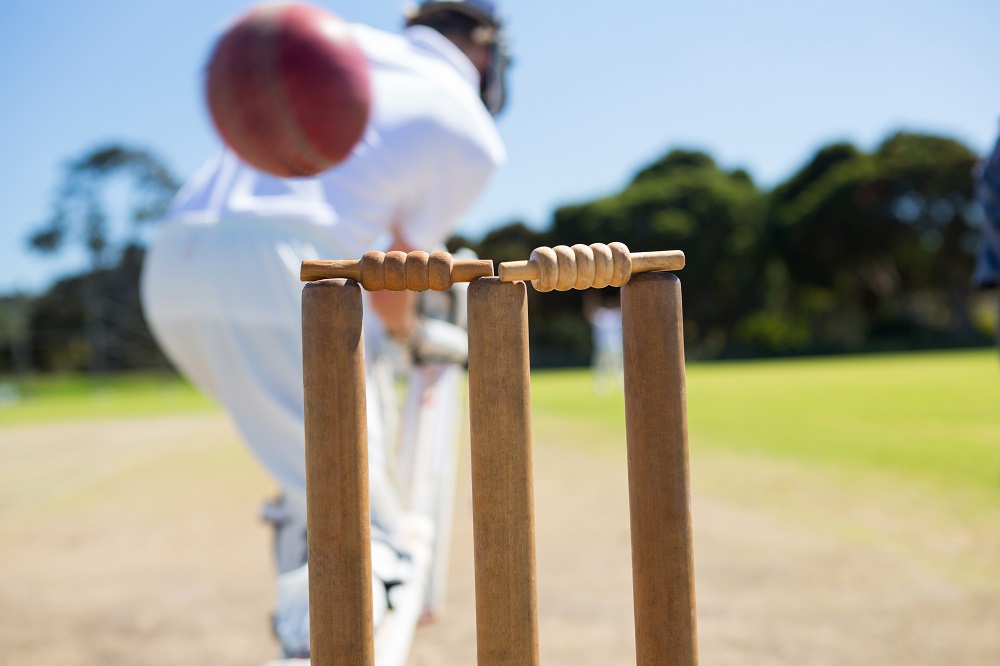“What’s the strike rate in cricket?” This is a common question among cricket viewers due to the importance of the metric. Both batsmen and bowlers have different definitions of strike rate.
Statistics are used to help understand the importance of a player or batsman in cricket, which is a technical sport. Statistics such as the average and strike rate give a clear picture of the careers and most common positions for cricketers.
Both the batting and bowling strike rate are relatively new statistics in cricket, which were created around five decades after One Day International Cricket was founded.
Before we can talk about the career strike rate for cricketers and the meaning of it, we need to first understand each term.
What is the strike rate for cricket batsmen? How do you calculate the batting strike rate
The average run rate of a batsman is the number of runs he scores after each 100 balls in a match. The strike rate of a batsman is a measure of how aggressive and deadly they are when facing opposing bowlers.
The strike rate of powerful batsmen, who are passionate about hitting big shots and scoring boundaries, is generally higher than that of the rest. Also, it is important to note that the context for batting strike rates is different in Tests as well as limited overs cricket (ODI and T20I cricket), because scoring runs in a Test match is difficult.
They may have to face many balls before they can attempt to hit the ball. Some maverick batsmen, such as Brendon McCullum, Virender Sehwag and Rishabh Pan, stick by their guns in Test cricket, scoring high runs.
T20I and ODI cricket have higher values for batsmen who have higher strike rates. This is used to evaluate a batter’s ability score runs against different types of bowling (e.g. To give an indication of his comfort with a particular type of bowling, we can use spin bowling and fast bowling.
We now know what a batsman’s strike rate is. Let’s learn how to calculate it for international cricket.
Mathematically, the batting strike rate can be described as the ratio of runs scored to number of balls faced. It is usually measured over an average 100 deliveries. This measure tells us how often a batter achieves his primary goal, which is to score runs.
To calculate the batting strike rate, divide the total runs in an innings by how many deliveries a batter has to face. This is the batting strike ratio.
The formula to calculate a batting strike rate is: (Number runs scored in an inning)/(Number balls faced) x 100
The best batting strike rates
To respect the format ODI or T20I, we’ll split this section into two sections:
Andre Russell, the West Indies’ batting legend, is at the top of this list. His incredible strike rate is 130.22. Russell is one the greatest limited-overs cricket hitters and can launch balls into the stands with ease using his brutal power and timing.
Russell has played the fewest matches of any of the top three batsmen over their careers, which includes Australia’s Glenn Maxwell or England’s Jos Howevertler. His more than 1000 runs in 50+ matches is a good enough sample to merit him the top spot.
He is a middle-order batsman and has not scored a century in 50-over cricket, but he does have four half-centuries. Andre Russell holds the record for the highest Indian Premier League strike rate.
The International Cricket Council (ICC), has expanded the T20 format to include smaller countries. This includes countries from North America, Europe, and several gulf nations. Although the cricket here is not of professional standard, there are often top-notch performances.
Romania’s Ramesh Stheesan leads the T20 batting charts with an incredible strike rate of 181.66 after playing 16 matches. Suryakumar Yadav from India and Ravija Sandaruwan from Kuwait are his fellow T20i players.
CricHeroes is World’s #1 free cricket scoring app to live score and live stream your local cricket matches & tournaments. Broadcast scores live ball to ball just like an international match.
What is the strike rate for cricket bowlers?
A lower strike rate means that the bowler has more success because he takes less delivery to dismiss the batter.
The batting strike rate is a measure of how many runs a batsman can score after playing 100 balls (the speed of an innings), while the bowling strike rate measures how fast a bowler can dismiss a batsman (the speed of the dismissal).
The bowling strike rate is also significantly different from batting strike rate. The bowling strike rate is exactly the opposite of batting strike rates, which are more important in limited overs cricket (T20 or One Day cricket) than they are in Tests.
In Test cricket, a player taking a wicket has priority over conceding runs.
However, a T20I and ODI bowler must maintain a strong economy rate –
concede less runs per bowl – even if they take fewer or no wickets.
How do you calculate the bowling strike rate?
To calculate a cricket bowler’s strike ratio, we need to divide the number bowled per innings by the number taken. To calculate the bowling strike rate, we divide (Balls bowled per innings) by (Wickets taken).
Read also Buy Jewellery Online and Choose From a Unique Selection
FAQs
- What’s a good rate of Test cricket strike?
Because of the high competition between batsmen and balls, strike rate is not an important statistic in Test cricket. It’s also a game that requires patience. A strike rate above 40 is generally considered good in Test cricket.
- Who has a high batting strike rate for T20?
Romania’s Ramesh Stheesan holds the current record for T20I cricket’s highest strike rate. After 17 matches, he has a strike rate 188.
- Who has IPL’s highest strike rate?
Andre Russell, West Indian and Kolkata Knight Riders allrounder, has the highest Indian Premier League career strike rate of 181.26.



